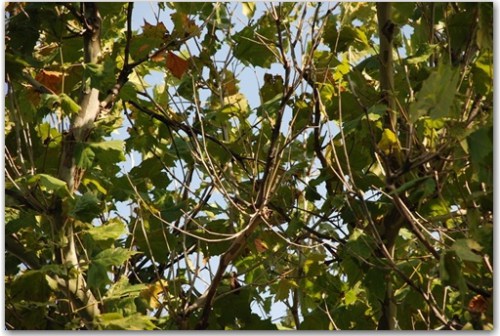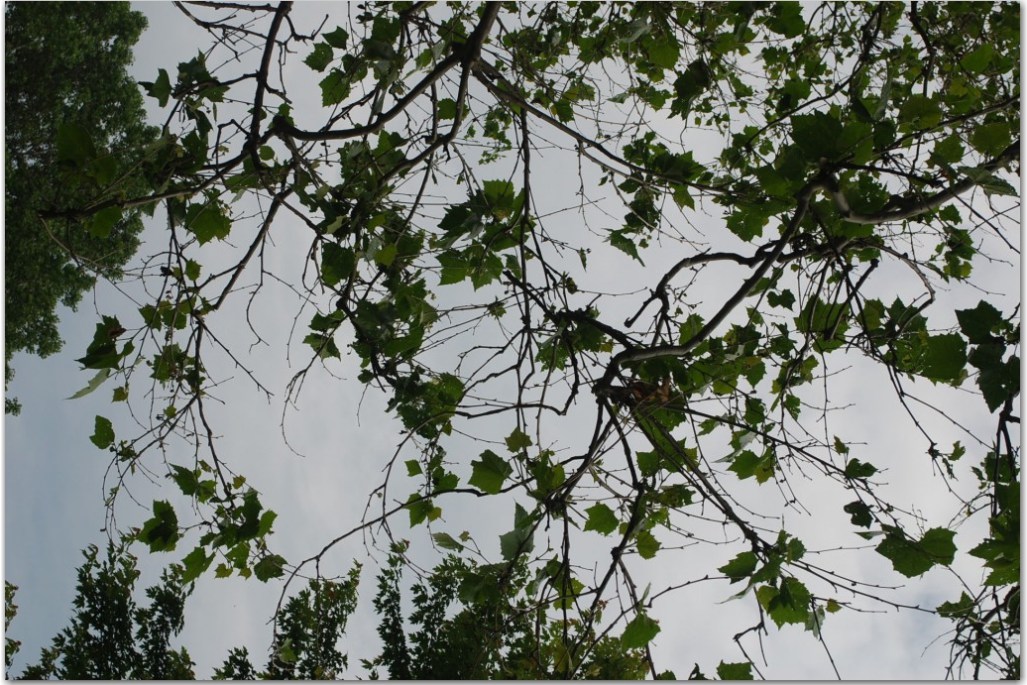There are several signs of Sycamore Anthracnose. Twig and leaf drop in the late spring, thinning crowns, distorted limb growth, and / or “witches’ broom” growth are the most common characteristics of this disease.

WITCHES’ BROOM
A close-up of this sycamore tree shows the “witches’ broom” growth characteristics that are associated with Anthracnose. This is caused by the repeated death of small, new branches as they get infected each spring and die. A new sprout grows out from a location and dies, which leads to a new sprout growing out of the same location and also dying. This occurrence repeats several times, and causes the dead shoots to look like a broom.

Here is “witches’ broom” that is very simple to spot. The advanced distorted growth is caused by the Anthracnose disease. Leaves and twigs frequently fall during the late spring, and occasionally all season, but then the tree re-leafs. The overall health of the tree suffers from this, and if repeated year after year, could subject the tree to severe decline.
It is important to note that a sycamore tree throwing bark is NOT a symptom of Sycamore Anthracnose. This is called exfoliation and is a natural part of a sycamore tree’s growth.
If you have any questions or concerns regarding your landscape, be sure to call us at 630-480-4090 to speak to a Board Certified Master Arborist. We can also be reached via email at emeraldtreecarellc@gmail.com


